By Mike Guffey
The Colt Detective Special was an American DA/SA revolver first produced in 1927 as a shortened version of the Police Positive Special handgun. It was designed for ease of carry and concealment. It proved very popular and over 1.5 million were produced in several models by the time production finally ended in 1986. Though originally offered in .32 caliber, the most common of the Colt Detective Specials were chambered for the .38 Special cartridge fed from a 6-shot cylinder and had a 2-inch barrel. (Some models with 3-inch barrels can also be found.) It is a classic-style, swing out cylinder, double action compact revolver with fixed blade front sight and notch-style rear sights and full lenght ejector rod. The cylinder rotates clockwise, unlike Smith & Wesson revolvers. The Detective Special models were also available in other calibers.
 The gun first became popular [in 1926] after J. H. FitzGerald, a Colt shooter, began to cut the Police Positive guns down to two inches for use as belly guns. In fact, FitzGerald went even further and bobbed the hammerspurs and cut out the front of the trigger guards in an attempt to make a real speed gun. They called them FitzGerald Specials, and many savvy gunmen preferred them for fighting guns.
The gun first became popular [in 1926] after J. H. FitzGerald, a Colt shooter, began to cut the Police Positive guns down to two inches for use as belly guns. In fact, FitzGerald went even further and bobbed the hammerspurs and cut out the front of the trigger guards in an attempt to make a real speed gun. They called them FitzGerald Specials, and many savvy gunmen preferred them for fighting guns.
– Jim Wilson, writing in the May, 2003, “Shooting Times:
The original square butt configuration was the most common revolver shown in detective movies during the late 20’s through the early 50’s though the first issue (generation) was only manufactured for about 10 years. It had an unshrouded ejector rod housing which gave it a distinct and unmistakable silouette with its square butt. The round butt was first produced in 1933 and the extractor was shortened and shrouded about 1958. Later issues of this handgun had a less distinct appearance. In all, there were four generations of the Detective Special by the time production ended. There are many of these fine revolvers still in service today, though, sadly, Colt no longer caters to the concealable snubby or the revolver market.
Colts Detective Special is still considered by many to be one of the finest snubbies ever made.
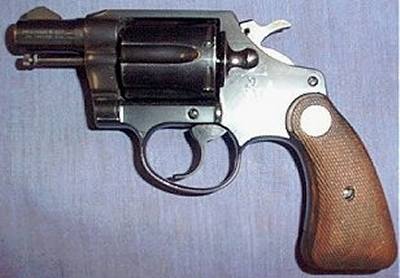
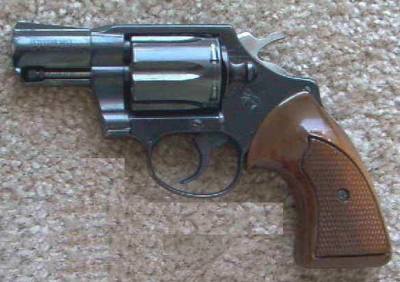
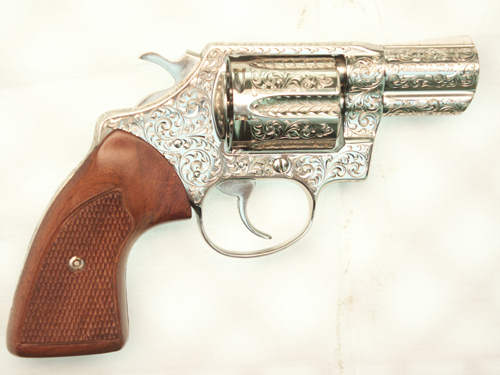
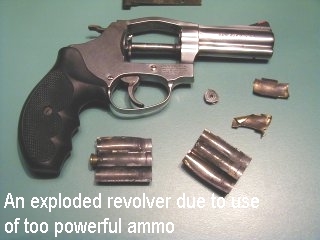 The Most Common Question About Older 2″ Snubbies
The Most Common Question About Older 2″ Snubbies
(As received in e-mail to this site)
Q: Is it safe to use +P ammunition in my classic Colt not rated for it?
A: The revolver was never rated for this higher power ammunition by Colt, not even the late production models. Anecdotal information suggests that current gunsmiths will say, “Sure, go ahead. No problem.” This, of course, is an easily denied statement since there is nothing in Colt’s literature to confirm or deny this position.
AHEM! While it may be that using +P is not likely to cause a kaBOOM! event, there are other types of damage which may occur. And this type of failure could be caused by a combination of other problems such as cartridge case failure or a bullet lodged in the barrel occuring at the same time high power ammo is used.
Q: Wait, wait, wait. A kaBOOM! event?
A: A kaBOOM! (kB!) event is a catastrophic failure of a firearm when it is fired, an explosion sending damage and debris flying in all directions. There are no statistics available on such problems with any but Glock pistols and that is somewhat of an apples/oranges situation.
Here are the important issues:
-
- There is always a possibility a firearm suffers from unrecognized damage by the current or previous owner which may have occurred from the use of high power, hot, handloads or use of ammunition loads for which it is not rated. Cracks and metal fatigue can be cumulative and be unrecognizable by the naked eye. Such conditions amount to an accident waiting to happen.
- The blast of +P ammo is noticably greater than that of .38 Special loads. This means if it is fired indoors in a self-defense situation two problems will probably occur. The volume of the blast will temporarily (perhaps permanently) damage your hearing. If fired in a darkened room, the blast will temporarily impair your night adjusted vision.
The Long and Short of It
The use of ammo for which this model firearm (or any firearm) has not been rated is not recommended. It amounts to abuse of the gun and will cancel or exempt any potential liability which its manufacturer might otherwise have had. This is true of factory or hand loads.
So here are your safe options regarding using +P ammo in a revolver with a 2″ barrel: (1) Get a current production S&W LadySmith, (2) Get another late production model Colt or S&W or use one rated for .357 Magnum, (3) Obtain another inexpensive 2″ barrel revolver such as the Taurus Model 85 or a Rossi with a 2″ barrel.
Another Point of View on +P in the D-frame Colts:
“I have a comment regarding the use of +P ammo in .38 caliber Detective Specials. According to the owners manual that came with my .38 Special Diamondback, purchased in the early 1980s, D-frame Colt revolvers, specifically including the Detective Special, can safely use +P ammo, subject to certain limitations. The manual recommends that steel frame guns, e.g. the Detective Special, Police Positive and Diamondback, should be inspected by a gunsmith after firing 2,000 to 3,000 rounds of +P. For alloy frame guns such as the Agent, Viper or Cobra, the recommended number of rounds between inspections is 1,000. I certainly would be hesitant to use any +P rounds in a first or second issue weapon, but assuming that there were no changes in the Diamondback throughout its production life and I dont think there were Id think that any Detective Special made during that same timeframe would be suitable for limited firing of +P ammo. In my case, I usually shoot standard pressure ammo at the range, but keep a couple of speed loaders filled with +P rounds available should a serious situation arise. I have shot enough +P ammo through my Diamondback to know that the POA POI relationship is very close to that of standard pressure ammo.” — Dean Storm
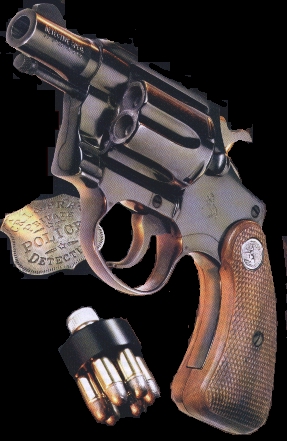




This page is use by permission only from The Armed Citizen

Comments, suggestions, contributions? Contact me here